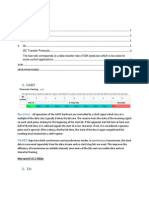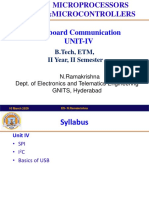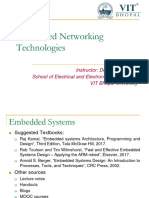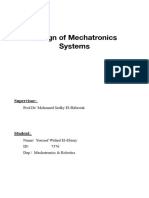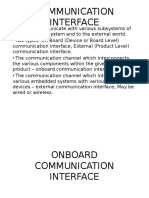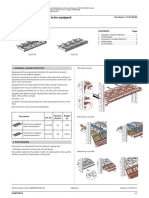0% found this document useful (0 votes)
61 views24 pagesCommunication Protocols
The document discusses various communication protocols including I2C, SPI, and UART, which are used for data transfer between microcontrollers and peripheral devices. I2C supports multi-master and multi-slave configurations, while SPI is faster but requires more wiring for multiple slaves. UART is a universal asynchronous protocol that transmits data over a two-wire interface without a clock signal.
Uploaded by
Niharika SinghCopyright
© © All Rights Reserved
We take content rights seriously. If you suspect this is your content, claim it here.
Available Formats
Download as PDF, TXT or read online on Scribd
0% found this document useful (0 votes)
61 views24 pagesCommunication Protocols
The document discusses various communication protocols including I2C, SPI, and UART, which are used for data transfer between microcontrollers and peripheral devices. I2C supports multi-master and multi-slave configurations, while SPI is faster but requires more wiring for multiple slaves. UART is a universal asynchronous protocol that transmits data over a two-wire interface without a clock signal.
Uploaded by
Niharika SinghCopyright
© © All Rights Reserved
We take content rights seriously. If you suspect this is your content, claim it here.
Available Formats
Download as PDF, TXT or read online on Scribd
/ 24








